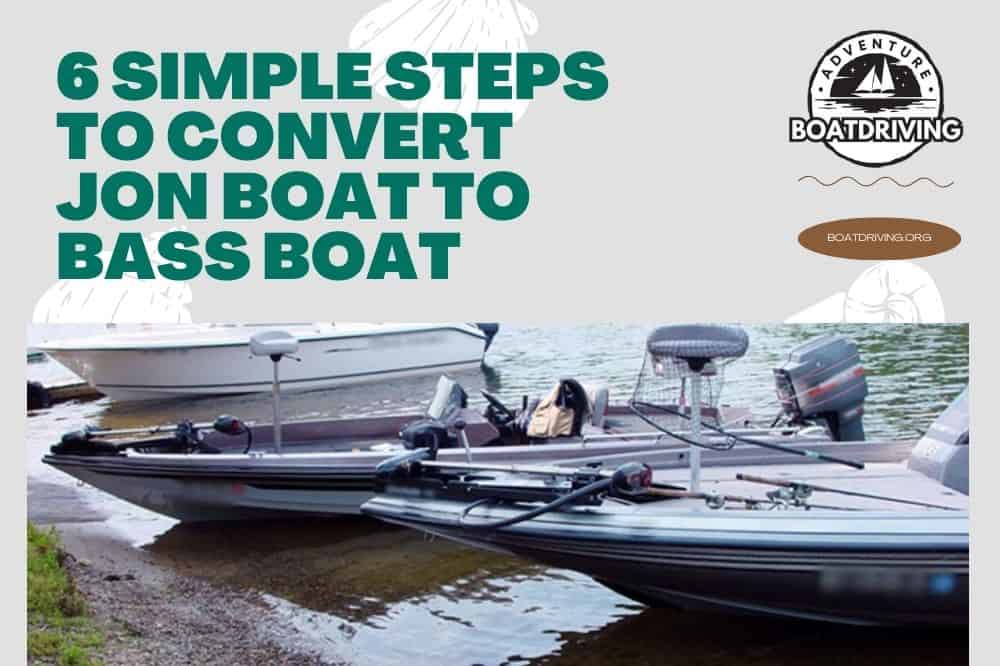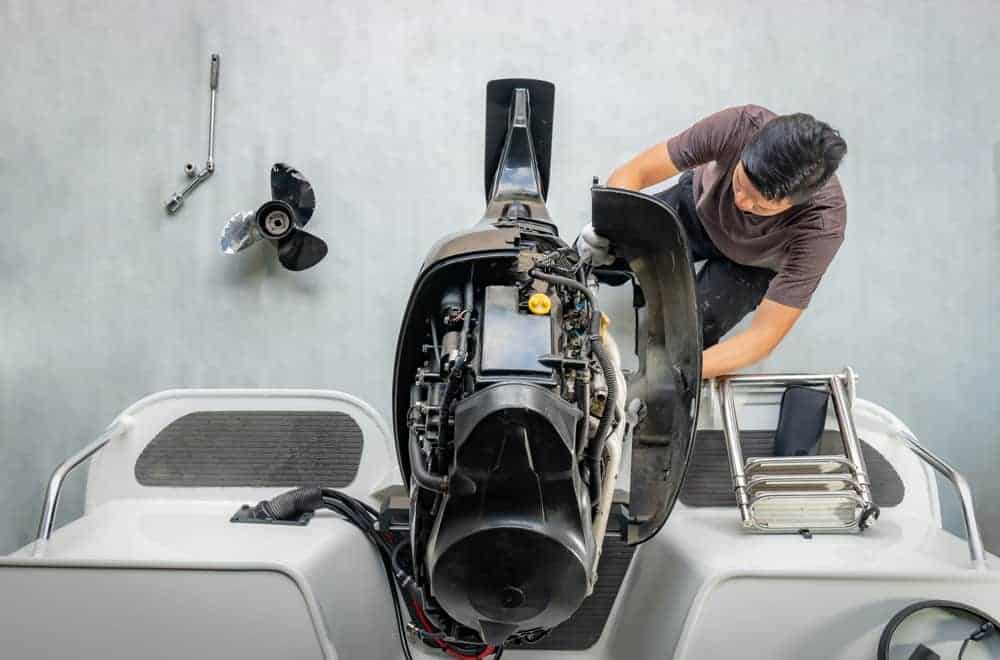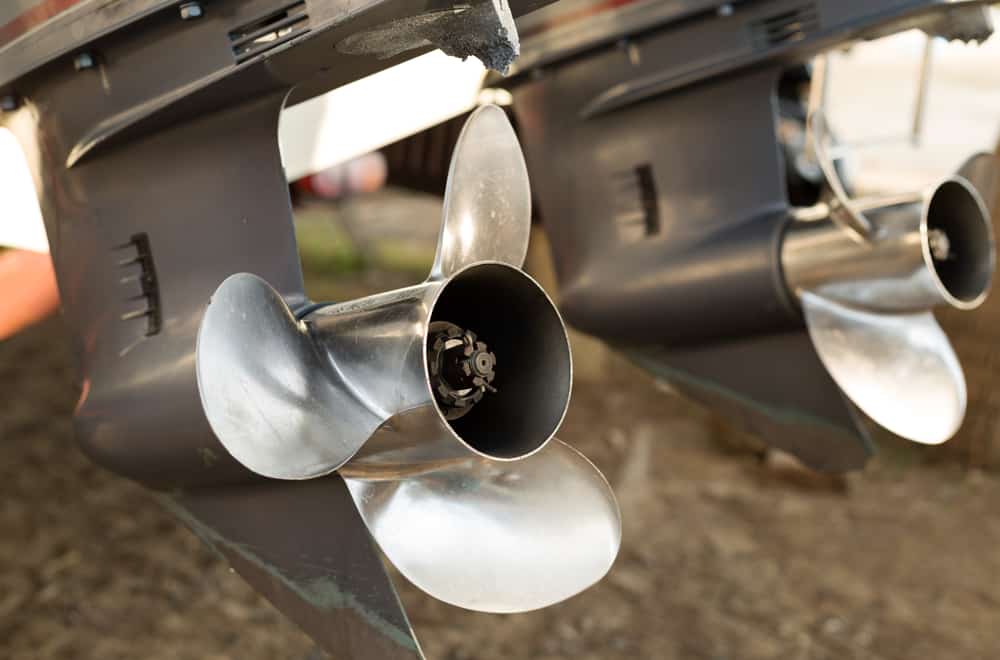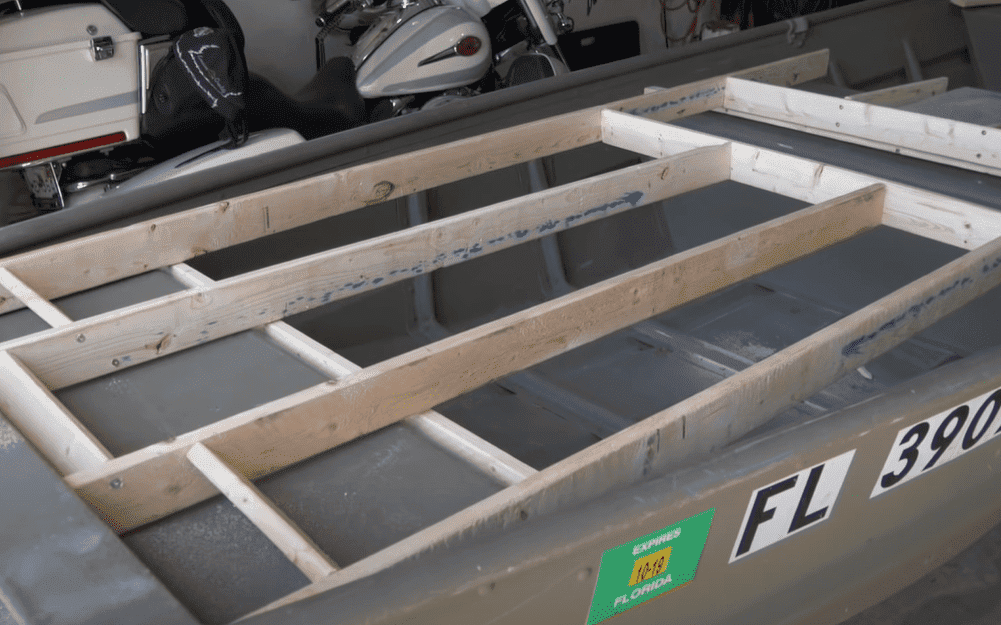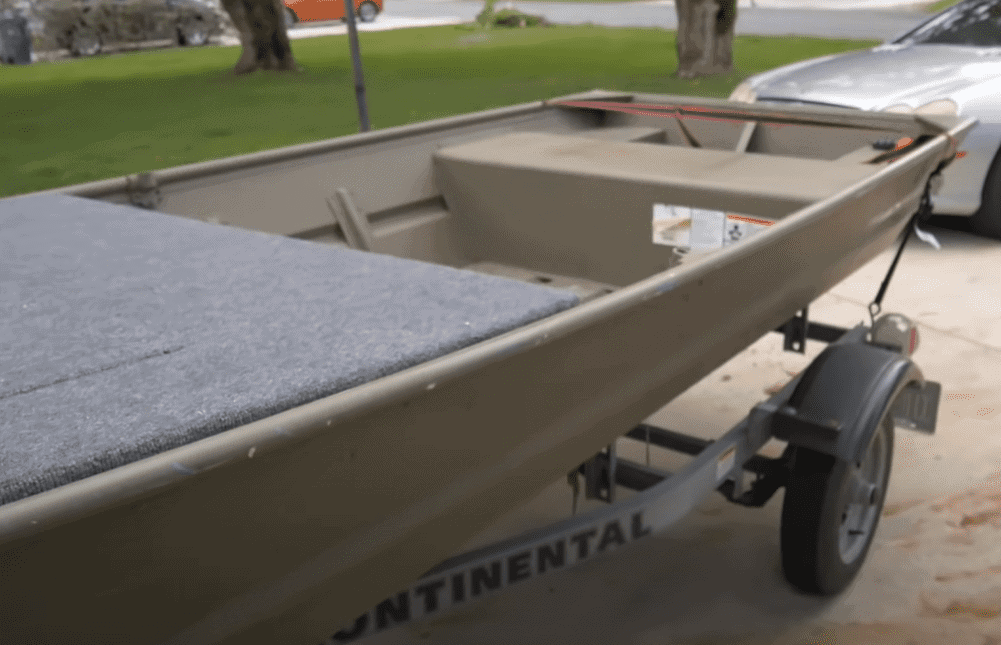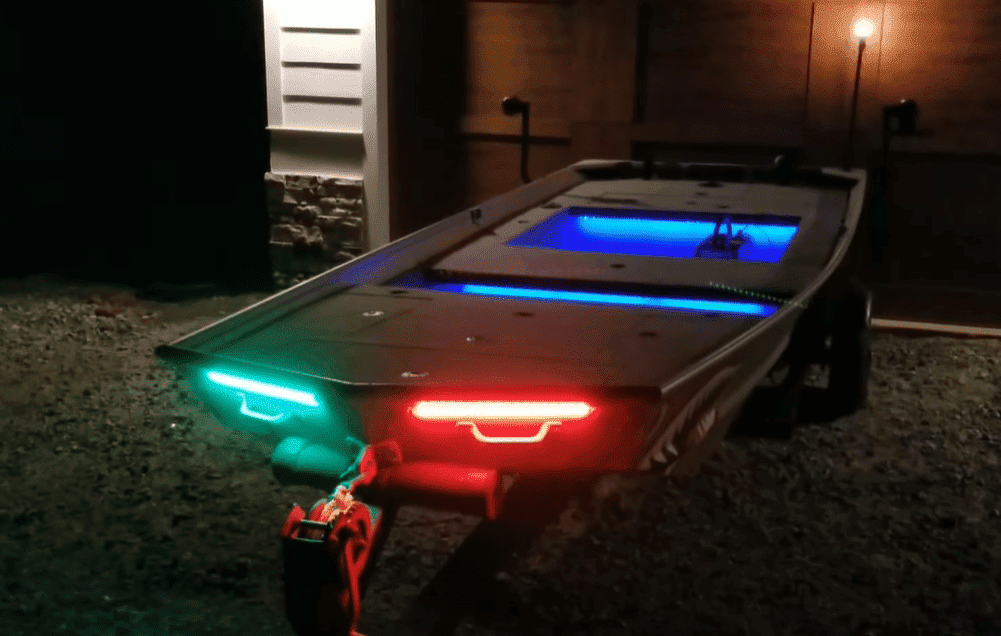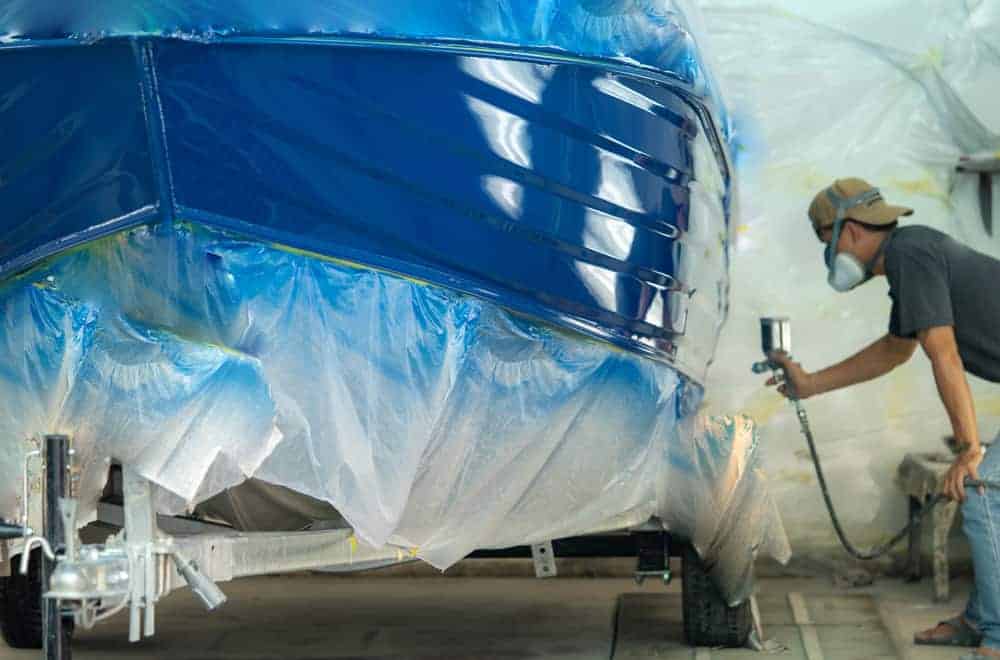Do you want a new fishing boat on a budget?
Are you looking to take your fishing experience to a whole new level without breaking the bank?
Converting a Jon boat to a bass boat can afford you the luxury of a high-performance fishing boat without spending so much money.
Jon boats are some of the cheapest around, and you can pick them up for a few hundred dollars. On the other hand, a basic bass boat can set you back by several thousands of dollars.
The simplicity of flat bottom Jon boats makes them good candidates for conversion and customization. A Jon boat to bass boat conversion will cost you less than purchasing a bass boat outright.
Aside from keeping money in your pocket, customizing your Jon boat will give you the satisfaction that comes with building something from scratch.
If you are eager to finally convert a Jon boat to a bass boat, this article is meant for you. Read on to find out what it takes to build your own high-performance bass boat.
Let’s get started!
How to Convert Jon Boat to Bass Boat?
1. Install a compatible motor
A big difference between a Jon boat and a bass boat is the motor each uses. Bass boats use a bigger, high-performance outboard motor unsuitable for a small, lightweight Jon boat.
Before you go out and buy a motor, check the capacity plate on your Jon boat. This will tell you how much engine power the boat can handle. Usually, a Jon boat will require a smaller motor. Buy a motor of the recommended capacity but make sure it is of the highest quality to bring your Jon boat up to the performance capacity.
Another difference between these two boats is the size of the transom. The transom is the vertical structure at the back of the boat from where the motor is mounted.
A Jon boat has a smaller transom than a bass boat, which has implications for the motor’s shaft length. If the shaft length is too short, the propeller will not be adequately submerged in water, causing your boat to drag.
Measure from the top of the boat’s transom to the hull to determine the correct shaft length you will need to install on your converted Jon boat. With these measurements, your boat motor seller should be able to recommend the most suitable shaft length.
Generally, outboard motors come in sizes between 15 to 30 inches, depending on the motor’s use and capacity. Outboards with shorter shafts are about 15 inches, those with medium-sized shafts measure 20 inches, and bigger ones can be as long as 30 inches.
When converting a Jon boat to a bass boat, weight is an important consideration. A Jon boat is a lightweight vessel, and you need to be careful not to overburden it for your own safety. For this reason, I recommend opting for an electrical motor as it is lighter and less fussy to operate, especially when you need to move fast.
In addition to the outboard motor, installing a trolling motor at the bow or stern of your Jon boat is a good idea. As you will use your newly converted boat for fishing, a trolling motor will easily help you navigate fishing spots.
If you install a trolling motor, you also need to install a remote steering system to the outboard. This lets you steer the trolling motor using the tiller and control the outboard remotely from anywhere in the boat. You can easily learn how to install a remote steering system on your outboard motor.
2. Choose the right propeller
Aside from the engine, the boat’s propeller affects almost every aspect of your boat’s performance, including speed, acceleration, fuel economy, comfort, and safety. Without the appropriate propeller, your fishing boat will not move or maneuver the waters as you’d want it to.
Invest in a high-quality propeller. Now that you are converting your Jon boat to a bass boat, you will need to replace your current propeller with a high-performance one.
A propeller with more blades might be slightly costlier, but it is well worth it. More blades will help thrust the new bass boat forward. With all the added weight of your new boat, you need a powerful prop that can support the forward motion.
3. Install the decking
The biggest and most demanding part of converting a Jon boat to a bass boat is installing a deck. The decking accounts for most of the weight in a bass boat. Remember, a Jon boat is comparably light in weight, and any excess weight increases the chances of the boat capsizing.
If done well, a nice, lightweight, and practical deck installation can really transform the look of your simple Jon boat. Build the frame first, preferably using wood and then deck the boat out with a light but equally strong material such as plywood.
Not all Jon boats lend themselves to decking. This is why I recommend starting this project with a wider, flat bottom Jon boat instead of a narrow one with flat sides and a thin v-shaped bottom.
Depending on the size of the boat and how much customization you need, you can build the decking frame to include storage space, a fish well, and compartments to keep your gear, battery, and other items you bring along on your fishing trip.
4. Set up the seating
Jon boats come with a basic bench compared to the comfortable high-back seats on a bass boat. The bench provides good enough seating space for up to three occupants. But, if you are looking for comfort, it is best to invest in new seating for your conversion project.
That said, I do not recommend removing the bench. Trying to pull out the bench can weaken or break the boat’s flooring. You are better off leaving the boat intact and using it as part of the decking frame and support for your new seats.
Once your decking is set up, installing the new high-back seats is as easy as drilling them onto the deck and screwing them down with bolts.
Check out this video on how to install seating in your boat.
5. Install lighting
Unlike Jon boats, bass boats are typically used at night and need enough lighting. According to US Coast Guard laws, all boats used at night should have navigational and night lights. Deck strip lights are not legally required, but they can add to the boat’s aesthetic.
Sufficient lighting lets you see what is ahead of you and keeps you visible to other boaters. Installing light in your newly converted bass boat makes it safer for you to navigate the waters when the sun goes down.
LEDs are the best type of lighting for your boat. Unlike incandescent lights, they are more energy-efficient and are generally safer in water.
Navigational lights are installed at the boat’s stern. These lights are important as they help others use the same waterways to see you and avoid any hazards.
According to the law, you should install red and green lights at the front of the boat. Specifically, green lights should be installed on the right side and red on the left side. You will also need to install a lifted white LED light at the back of the boat.
Navigational lights on a boat should be bright enough to be seen from as far as two nautical miles. The white light should be lifted above the red and green front lights by 1 meter. You can lift the light by mounting it on a pole.
Night lights, also known as searchlights, are usually placed at the front of the boat. These lights guide your path, allowing you to see what is ahead of you. You can learn how to install navigational, night, and decking lights.
6. Paint the boat
With your deck set and other accessories installed, you can paint your newly converted bass boat. A fresh coat of paint will uplift and give your boat a new look.
If you decide to go ahead and paint your boat, the first strip down the old paint using 180-grit sandpaper. Depending on your paint type, you may also need to apply primer before applying your first coat of paint. Follow the manufacturer’s instructions on mixing the paint and the application technique.
Summary: How To Convert A Jon Boat to A Bass Boat
Whether you are an avid boater or a DIY enthusiast, converting a Jon boat to a bass boat can be a fulfilling project. When you embark on this project, it is best to start with a wider, flat-bottom aluminum Jon boat, which gives you more room for conversion.
Pay special attention to the boat’s weight. As you install the motor, decking, seating and other accessories, keep the weight balanced throughout the boat. A balanced boat is safer, easier to operate, and fun to ride.
